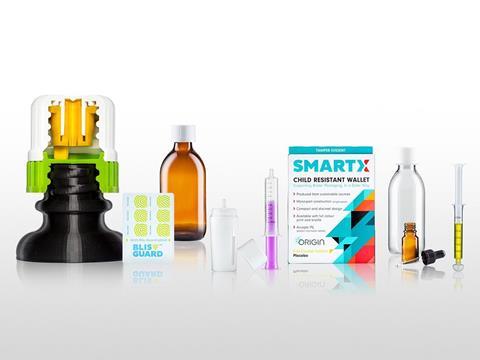
Rich Quelch, global head of marketing, Origin, addresses the growing challenges for primary packaging and delivery systems.
In 2016, the total global biologics drug discovery market was valued at $8.1 billion and this is forecast to grow to nearly $25 billion by 2025.
It’s clear biologics are the future of medicine, based on their proven ability to treat major chronic diseases better than existing alternatives. This, combined with an ageing population, is driving exponential growth in the global biological drugs market.
However, the rapid rise of biologics has thrown up huge challenges for packaging to deliver safe and effective products. If these aren’t overcome, we risk halting progress on these groundbreaking new treatments and ultimately, put health outcomes at risk.
Removing contaminants
The current reliance on polyethylenes, polypropylenes and polycarbonates in pharma packaging will mean stakeholders may fail to meet the future efficacy requirements for safe and effective biologic products unless significant changes are made.
Degradation during transport, storage and usage is a concern with biologics. Proteins are very sensitive to metal ions, so a crucial issue to consider is the accumulation of ‘leachables’ from metals ions found in traditional packaging materials like glass, plastics and rubber.
Enter fluoropolymers. Being chemically inert, they form a resistant barrier to eliminate biodegradation issues. They don’t use any leachable or degradable stabilising additives, so even over time, under intense environmental pressures or in the presence of solvents, oils and oxidizing agents, medicines remain stable.
As a less brittle, lighter and more flexible alternative to glass, cyclic olefin plastics are also growing in popularity because, like fluoropolymers, they’re intrinsically very inert, composed of just carbon and hydrogen.

Re-designing delivery systems
By their nature, biologics are difficult to form into solids or capsules, meaning injection is the most common method of delivery.
A prefilled syringe is a win-win solution for packaging manufacturers and the market is estimated to be worth $22.5 billion by 2025. Benefits include reductions in overfill waste and a reduced risk of misuse among patients.
While silicon oil, used as a lubricant to help move the plunger in prefilled syringes, is considered non-toxic and biocompatible, there’s evidence from microflow imaging (MFI) protein aggregation can occur.
Packaging manufacturers can combat this by ensuring every new solution is tested for a variety of individual factors and how compatible they are, when they’re combined with different temperatures, transportation and timings.
Security is a critical issue for packaging manufacturers, given the appeal and cost of biotech drug products. One available option is smart packaging, which uses holograms or unique printing to create difficult-to-reproduce labels.
Another consideration involves electronic pedigrees, like those enabled by RFID technology, to track and trace products as they move from manufacturer to distributor, to retailer or provider.
Applying QbD principles
The rise in biologics comes with additional implications for biopharmaceutical companies and their manufacturing partners, most notably risk mitigation and delivery.
The adoption of quality-by-design (QbD) principles in the development and production stages ensures components and packaging are obtained with stringent and specialised needs in mind. It also helps manufacturers to define desired product performance goals and identify critical quality attributes.
The packaging and processes are then created and monitored so they continue to meet ever-changing attributes, which will improve the understanding of how these materials and process parameters impact CQAs, enabling the packaging industry to alleviate variability.
To achieve the best QbD benefits, timing is everything. Pharmaceutical companies and their partners should build this level of quality monitoring and risk mitigation into the packaging manufacturing process from the start.
By doing so, not only can high-quality standards be met through commercialisation, but patients, all over the world, using the latest therapies have a better chance of doing so more safely and effectively.
How to get ahead
Rising investment in the biologics sector is shifting the makeup of the pharmaceutical market, increasing its share from just 16 to 25 percent in the ten years up to 2016.
The latest groundbreaking developments in pharma and biopharma research - around the treatment of cancer and autoimmune diseases for instance – now call for especially flexible filling and packaging equipment.
Future products will need to be adaptable and different packaging formats will need to be readily available, quickly, with short changeover times.
Safety concerns during the drug production process will lead to more growth in containment solutions and barrier technologies. The number of new production lines equipped with isolator technology has already risen from three to five out of ten today, with this demand continuing to grow.
Those who stand out from the crowd will be producing packaging designs which incorporate smart value-added features. For example, more exclusive deals will be struck to secure access to enhanced delivery devices, vacuum insulated panels added to cut cold chain risks and hibernation capabilities to extend a product’s shelf life if unexpected delays occur.
It’s a challenging, yet exciting time, for the pharmaceutical packaging industry. Those who strive to address the many variables, in one fell swoop, will be the ones that succeed in increasing efficiency, quality and flexibility to deliver new biologic products.
















